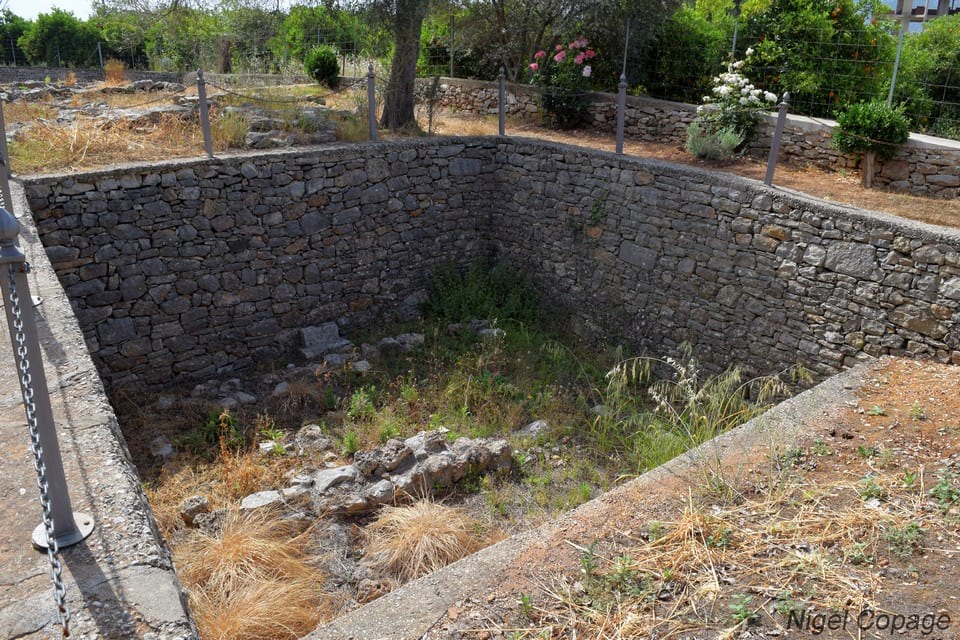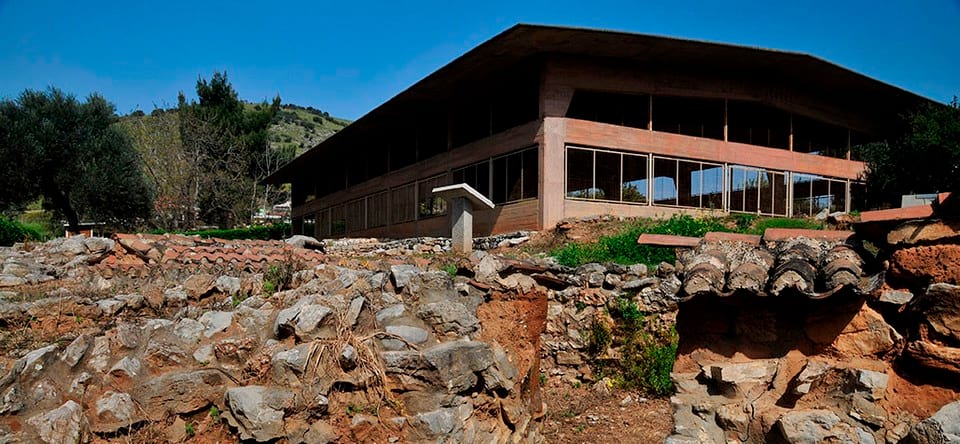
Lerna is the site of successive prehistoric settlements dating from the 7th millennium BC up until the Bronze Age. The location was a natural choice for human habitation with its abundant natural resources including fresh water, fertile land and proximity to the sea. It was also of strategic importance being situated on the narrow strip of land separating the Argolida and the Southern Peloponnese. In Greek mythology Lerna was known as an entrance to the underworld and for being where Heracles killed the Hydra.
Mythology
In ancient times Lerna was a marshy region of springs and a large lake. These springs were said to be a gift from Poseidon who was courting Amymone, a daughter of Danaus, the legendary King of Libya and subsequently of Argos. The lake at Lerna was thought to be bottomless and was believed to be an entrance to the underworld. It was also the site where as the second of his labours, Heracles killed the Hydra, the many-headed water snake.
History
Excavations in the 1950s found evidence that Lerna was first occupied in the Early Neolithic period (around 7500 years ago). Successive settlements were built one on top of another until the end of the Bronze Age.
In Neolithic times the inhabitants of Lerna were engaged in agriculture and livestock farming. The modern day site includes the unearthed ruins of a house from the Middle Neolithic period and a well preserved fortification wall.
After a long period of Neolithic occupation Lerna seems to have been abandoned for a while before being re-settled in the Early Bronze Age. This new settlement became a small town protected by a double ring of defensive walls, with gates and towers. Within the enclosure were a number of substantial buildings the largest of which was a two-storey place or administrative centre notable for its unusually early use of clay (terracotta) roof tiles and which is now known as “The House of Tiles”. This building was destroyed by fire perhaps due to enemy raiders or maybe because of lightning. But the clay tiles were preserved in the fire and were uncovered at ground level. Also found in the debris were lumps of clay with impressions of seals suggesting Lerna engaged in maritime trade with other regions including Crete, Aegina and other Aegean islands.
The House of Tiles was never rebuilt and later it was surrounded by a small town consisting of rows of small houses with stone foundations. Unusually for this time the town had numerous deep rubbish pits (“bothroi”).
In the latter part of the Helladic period, two rectangular Mycenean shaft graves (clearly visible today) were cut into the tumulus covering the House of Tiles suggesting it may have had some religious significance. Later the whole area became a Mycenean cemetery. The site was eventually abandoned during the latter part of the Bronze Age.
As for the fabled Lake of Lerna, geologists have determined that in ancient times it was a freshwater lagoon which in the Early Bronze Age had a diameter of nearly 5km. However gradual deforestation increased the level of silt deposits until eventually it became a malarial marsh. For this reason it was finally drained in the nineteenth century.
Excavations
The first systematic excavations of the site were conducted in the 1950s by the American School of Classical Studies under the leadership of its Director, J L Caskey. Restoration work was carried out on the fortifications, tower and some of the Bronze Age houses. After surveys had been conducted the earliest remains were covered up and a roof was constructed over the House of Tiles. The findings from these excavations are exhibited in the Archaeological Museum of Argos.
Click here for information on tickets, opening hours etc
Click here for a video of Lerna by Philip Bekyros
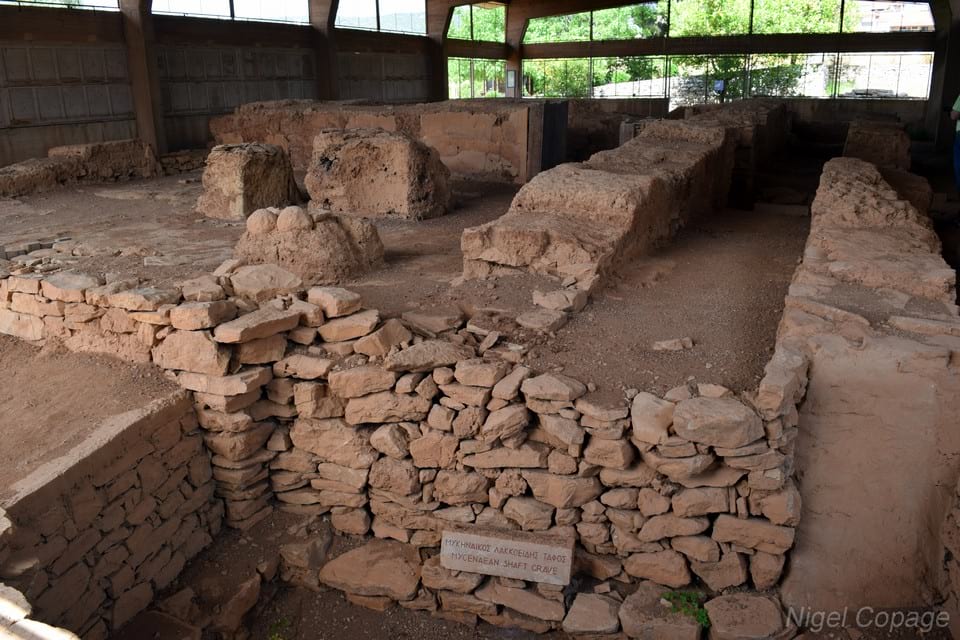 The House of Tiles
The House of Tiles
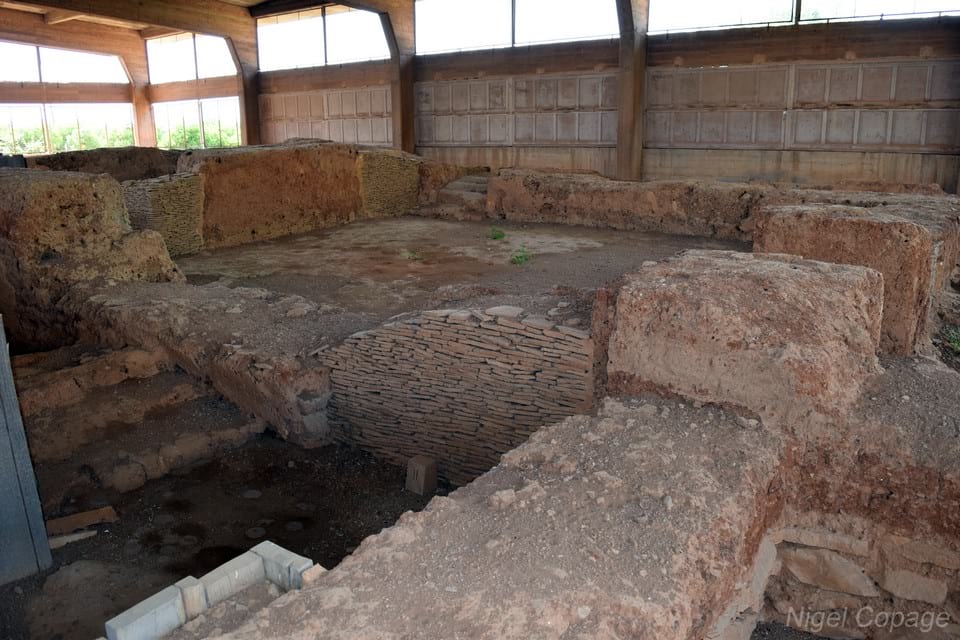 The House of Tiles
The House of Tiles
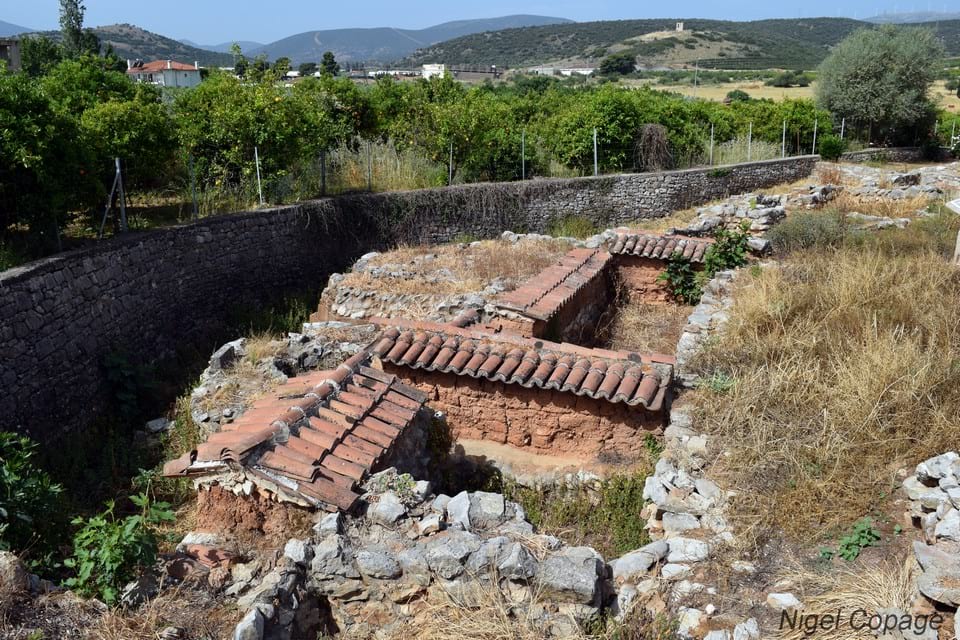
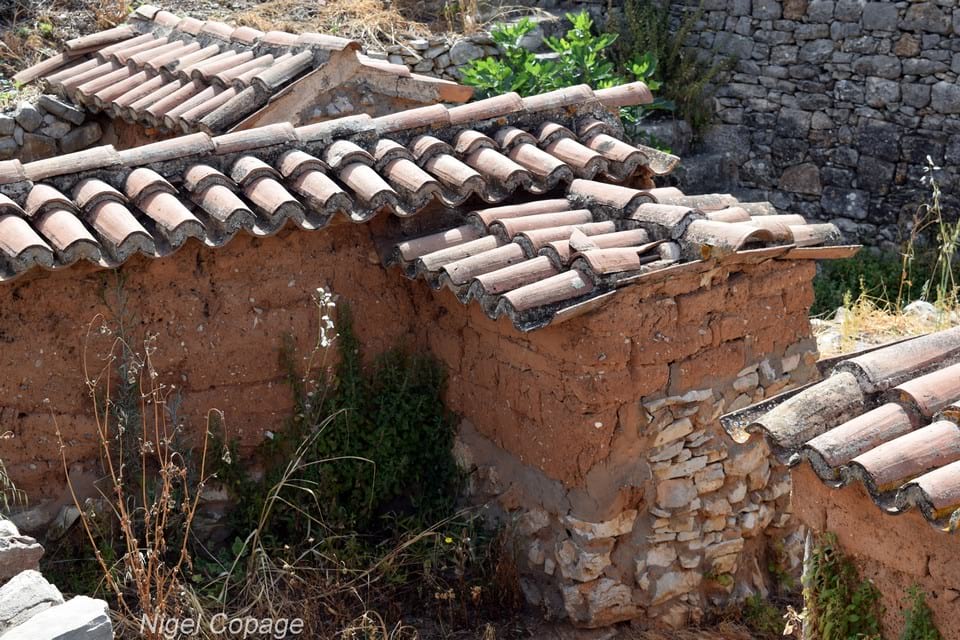
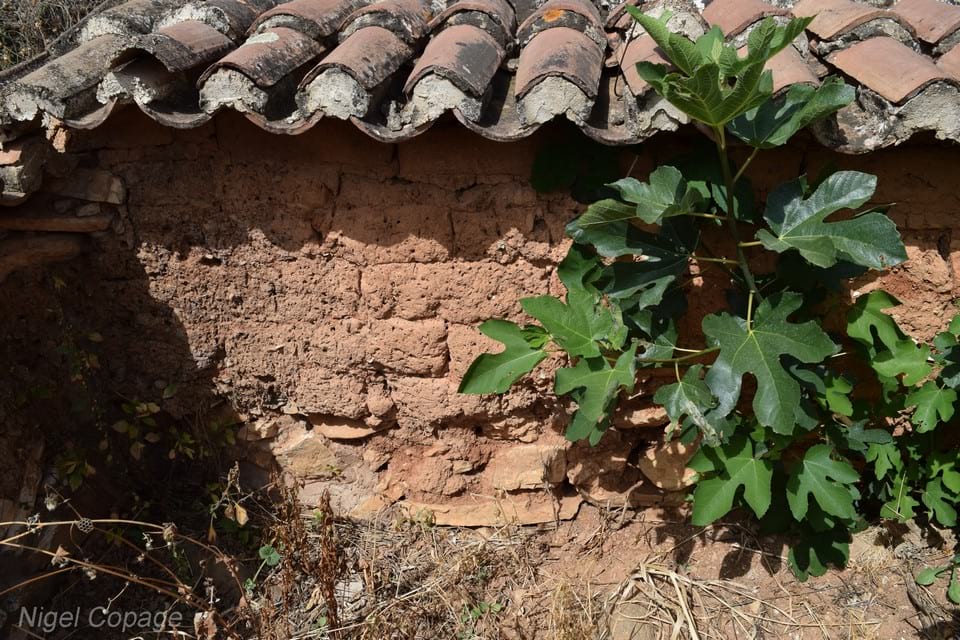
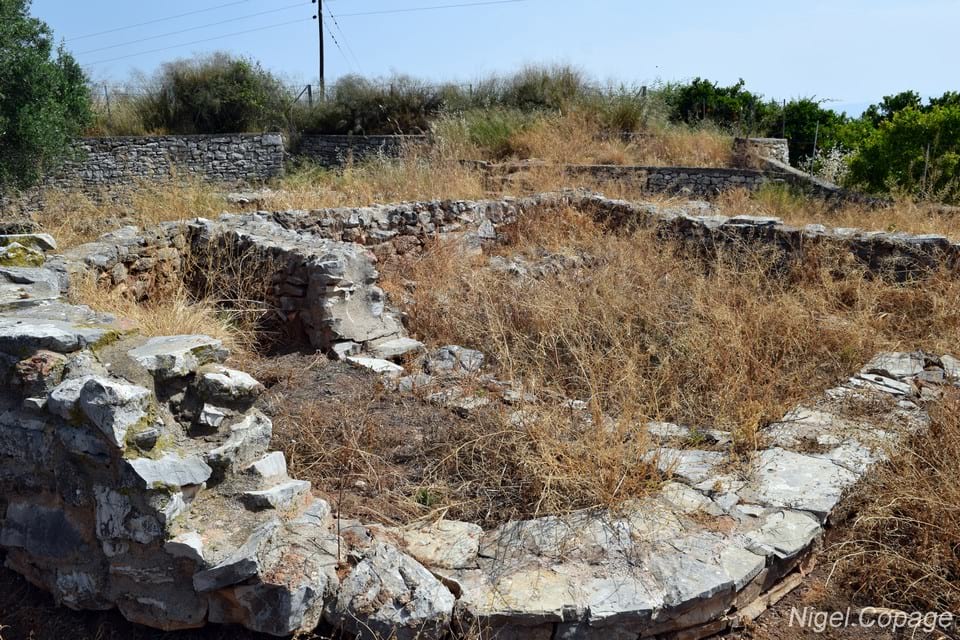
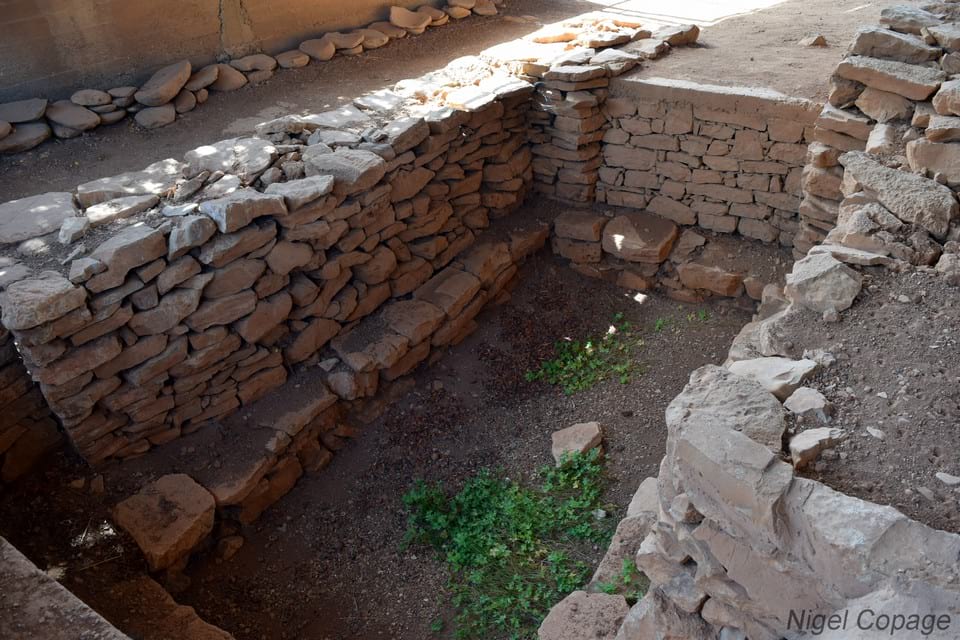 Shaft grave inside the House of Tiles
Shaft grave inside the House of Tiles
